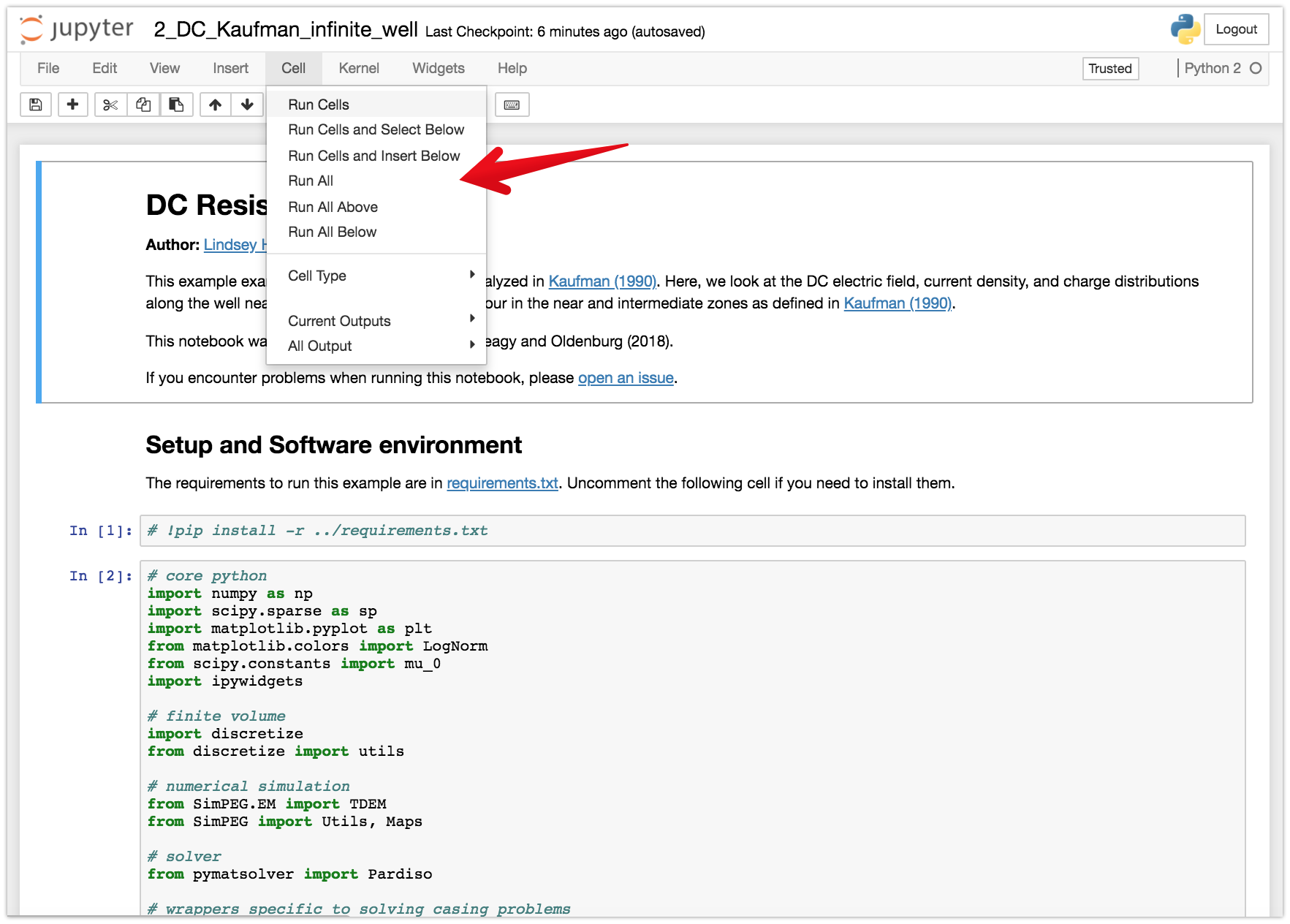summary | contents | usage | running the notebooks | citation | issues | license
This repository contains the notebooks used to generate the examples shown in Chapter 5 of the thesis "Electromagnetic methods for imaging subsurface injections" by Lindsey J. Heagy.
In this chapter, I examine behavior of currents in a time-domain EM experiment over a steel-cased well. I look at the response of a conductive well and a conductive, permeable well. I also consider approximations to conductive permeable wells and discuss the extra complexity that EM introduces as compared to DC resistivity.
The notebooks can be run online through mybinder or azure notebooks.
To run them locally, you will need to have python installed, preferably through anaconda.
You can then clone this reposiroty. From a command line, run
git clone https://github.com/simpeg-research/heagy-2018-em-casing.git
Then cd into the heagy-2018-em-casing
cd heagy-2018-em-casing
To setup your software environment, we recommend you use the provided conda environment
conda env create -f environment.yml
source activate em-casing-environment
alternatively, you can install dependencies through pypi
pip install -r requirements.txt
You can then launch Jupyter
jupyter notebook
Jupyter will then launch in your web-browser.
Each cell of code can be run with shift + enter or you can run the entire notebook by selecting cell, Run All in the toolbar.
For more information on running Jupyter notebooks, see the Jupyter Documentation
coming soon...
If you run into problems or bugs, please let us know by creating an issue in this repository.
These notebooks are licensed under the MIT License which allows academic and commercial re-use and adaptation of this work.




